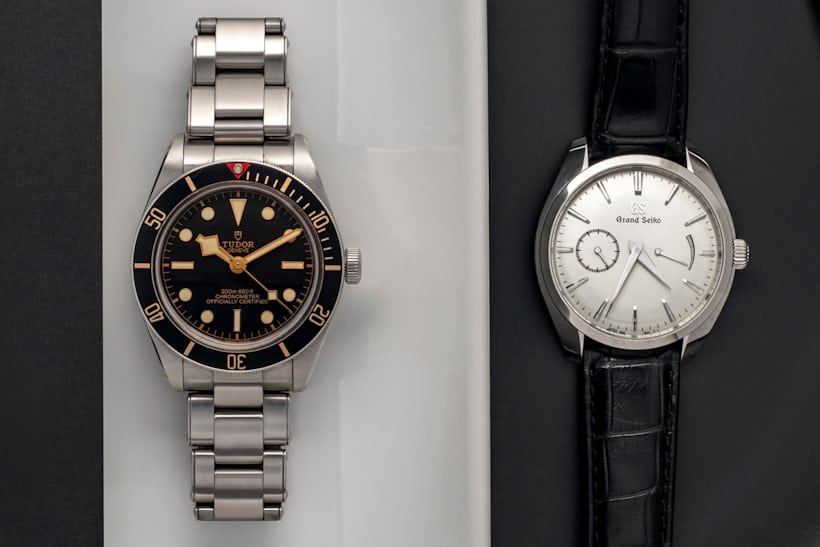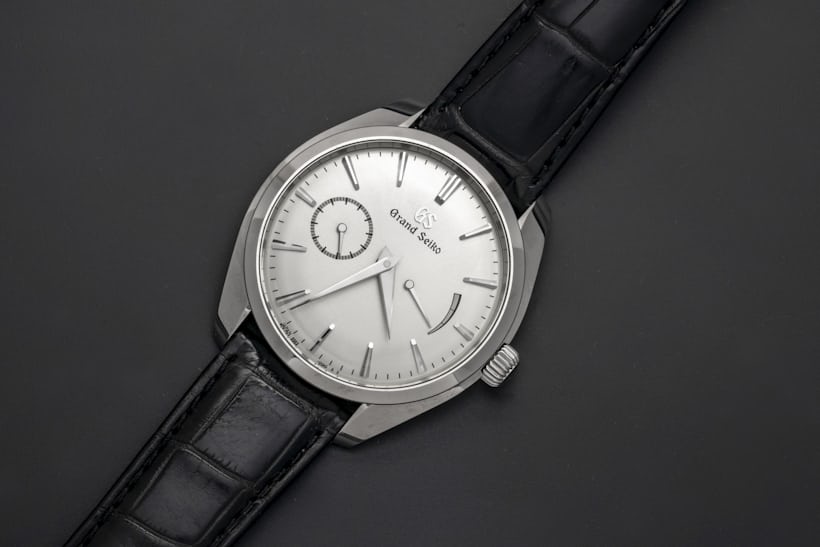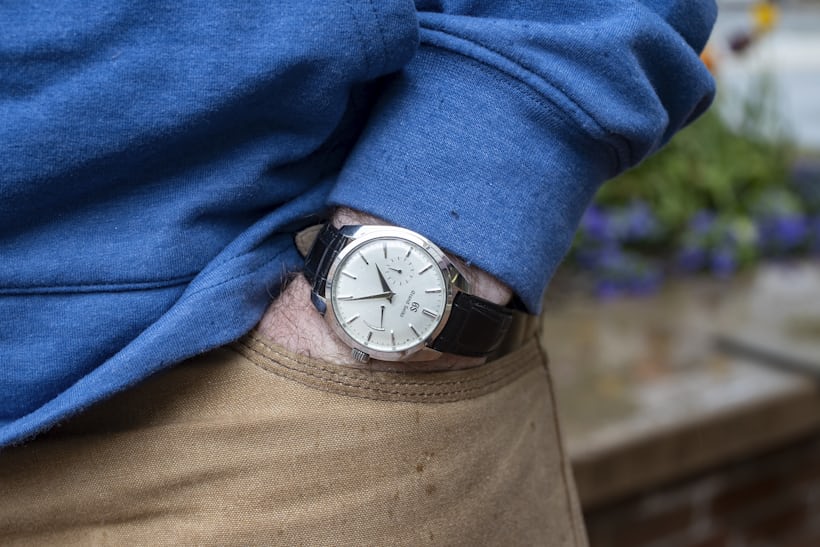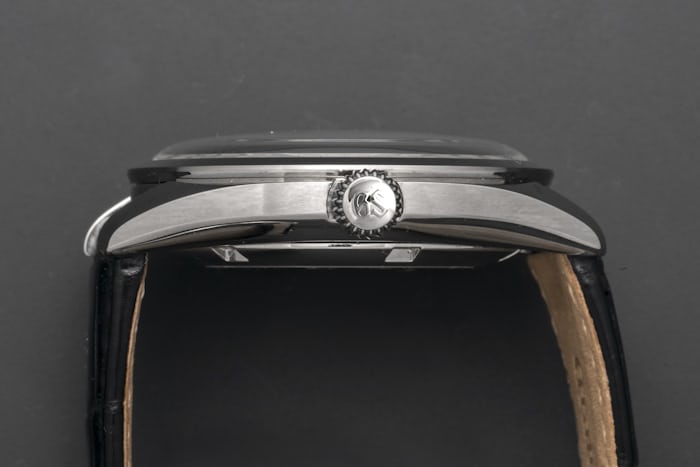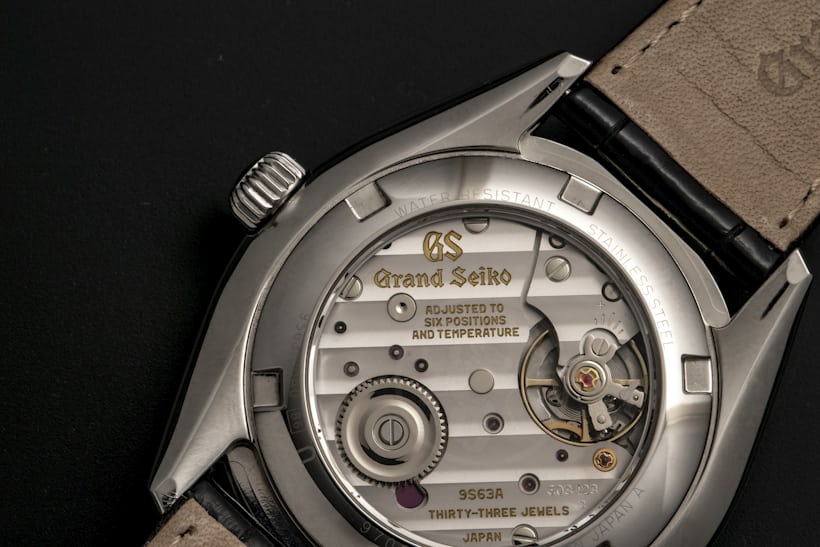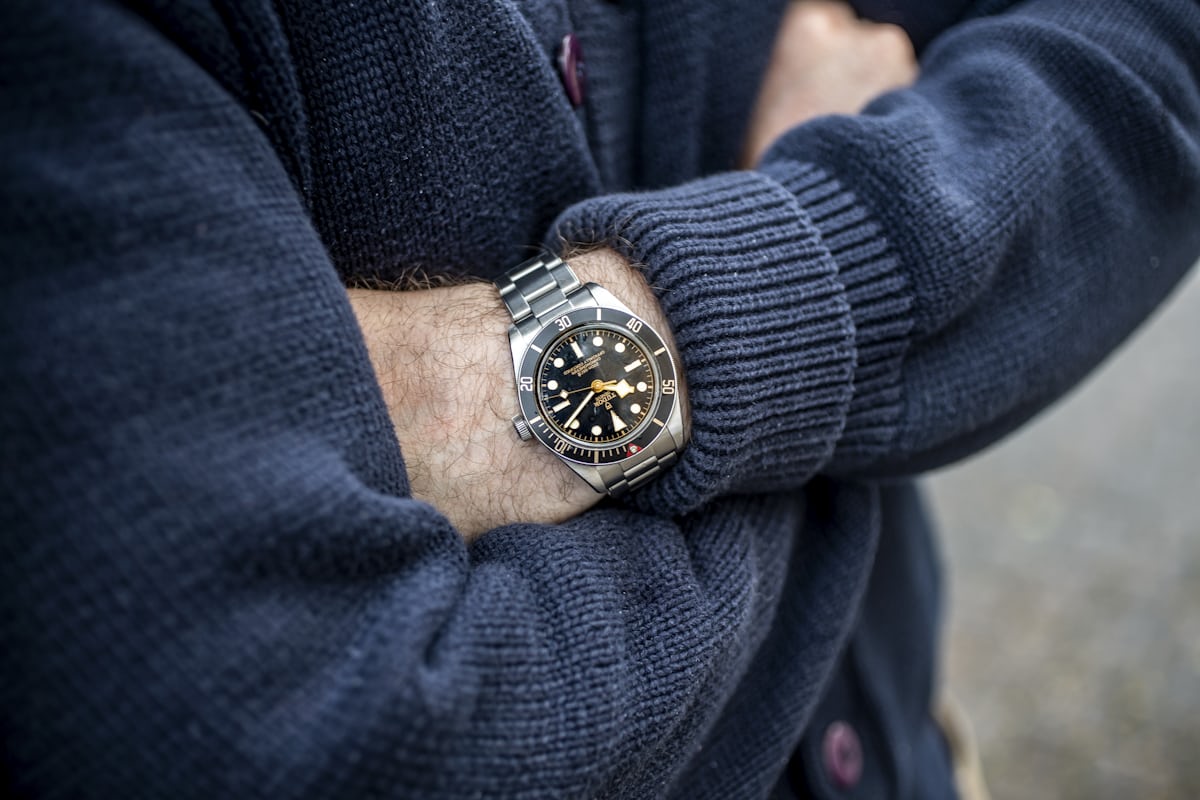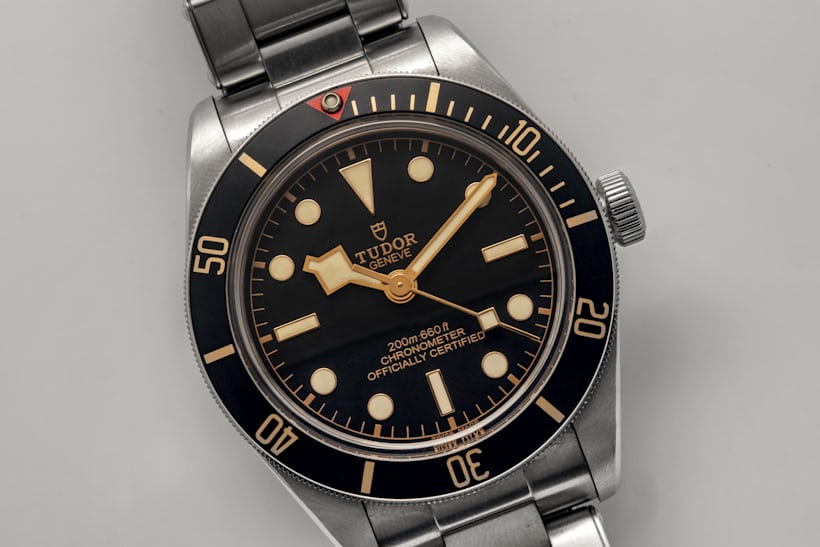The Two Watch Collection: The Tudor Black Bay 58 And The Grand Seiko SBGK007
One tool watch, one dress watch.
Originally published by Cole Pennington on HODINKEE, May 29th 2020
As a thought exercise, The Two Watch Collection forces us to decide what’s most important in a watch, and further, a collection. Being novel or interesting just isn’t enough in a two-watch collection. Limited real estate means we must strip a watch down to its essence and ask: Is this the best expression of whatever it’s trying to achieve? If the answer is no, there simply isn’t room in the collection. That’s the maxim I operate under when forming a two-watch collection. It has to be the best expression of whatever it is.
Another product of The Two Watch Collection thought exercise is that it makes us really think about how we use a watch and the role of a collection. If we’re honest with ourselves, then two watches are all one would need to consistently have a perfect watch for every occasion. Follow this to its end, and you arrive at the conclusion that versatility is paramount.
So when I approach the exercise the parameters are a) it must be the best expression of whatever it is trying to achieve, and b) the collection has to meet the needs of daily life.
Previous installments of this column point to the notion that a two-watch collection can be very personal and reflective of the author. Take Ben’s picks from 2016, for example: a Patek Philippe 3940 and the A. Lange & Söhne’s 1815 Chronograph. Something like that wouldn’t work for me simply because a lot of my time is spent doing things that would destroy what can only be considered as horological art, and I wouldn’t want to do anything that would disrespect Walter Lange or the Stern family in any way.
This is all to say that at least one of the watches has to be able to withstand an active lifestyle. The other can be reserved for occasions where being in harm’s way isn’t an issue. In other words, an elegant timepiece. One tool watch, one dress watch.
But practicality isn’t the only parameter that has resulted in this selection. There is indeed a thematic link to these two watches, and it has to do with what Gary Shteyngart once dubbed “The new Holy Trinity of Watches” on HODINKEE Radio (1:01:48 here). He’s onto something. Tudor, Grand Seiko, and NOMOS are uniquely positioned in the modern horological landscape to offer incredible value and refinement. But to understand the philosophy behind the emergence of the new Holy Trinity, we must look at the “old,” traditional Holy Trinity: Vacheron Constantin, Patek Philippe, and Audemars Piguet. These manufacturers have deep roots in horological tradition, and throughout a storied history, they have earned the spot as the top luxury producers. Thus, many of their watches are out of reach. When looking at the Two Watch problem, I chose to stay within a price point that’s more accessible.
Offering strong value is part of what’s elevated Tudor, Grand Seiko, and NOMOS to their newfound position at the altar. Both of these watches have also managed to capture a piece of the current horological zeitgeist, though in much different ways. The Seiko through looking forward and offering design that’s entirely new along with an all-new mechanical movement; the Tudor through a well-executed amalgamation of elements that have made past Submariners, both from Tudor and Rolex, great.
With the new Holy Trinity in mind, I ran my two-watch collection by Mr. Shteyngart. After we realized that this exercise can result in far too many thoughts and words, when the point is to actually to find simplicity, he had this to say of the selection:
“A perfect collection from two of the trinity. One is a homage to the past and one is a dress watch crying out for adventure, the sands of Morocco come to mind for some reason. I know blue and green are in these days, but there’s some amazing work being done with champagne dials. My NOMOS Minimatik comes to mind from another trinity member.”
Perfect collection? I’m not sure perfection can ever be achieved, but this pair certainly comes close. To me, these watches represent the best of modern horology each in their own category, and together, they form a collection that prepares you for just about any occasion. The Tudor Black Bay 58 could potentially be a one-watch collection, as could the Grand Seiko SBGK007, which we’ll take a look at first. Between the two of them, all your bases are covered.
Grand Seiko SBGK007
The champagne dial Shteyngart was referring to adorns the SBGK007, part of Grand Seiko’s Elegance collection of thin dress watches. It’s often described as silver online, but in fact, there’s a hint of creme to the flat silver complexion that makes it even more interesting. Add the subtle radial brushing, and you’ve got a dial that’s clean as a whistle but hides small textural details in plain sight. The soft champagne hue makes the polished hands and markers absolutely shine; I’ve owned many tool watches that were far less legible than the SBGK007. Even when there’s not a ton of light, the facets of the features on the dial are so finely polished that they light up the dial.
But the signature Grand Seiko zarastu-polished shimmer isn’t the only thing that catches my attention when it comes to this model.
The Elegance collection was one of the first lines that was developed after Grand Seiko was decoupled from parent company Seiko. It’s a line of watches that stands out because it’s genuinely different than many of its Grand Seiko brethren. It was introduced with the limited edition SBGK005, essentially the same watch as the SBGK007 we have here but instead, the SBGK005 featured a blue dial. That watch was a home run for Grand Seiko, but there were only 1,500 examples produced. Shortly after, the SBGK007 and SBGK009 were introduced. The SBGK009 features a dark grey dial, but to my eye, it’s the SBGK007 that sticks out as the star of the series, hence its inclusion in this two-watch collection.
To start with, the case and dial design don’t draw from past Grand Seiko designs, but instead look forward. The case is 11.6mm thick, and as Stephen points out in his A Week On The Wrist with the SBGK005, this watch’s blue-dialed sibling, “the contractions and tension in the case design are why it is so successful and enjoyable to look at.” Grand Seiko set out to produce an elegant watch, and it sure is, but there’s an undeniable sportiness that comes from the way the case wears. On the wrist, it inspires confidence, and the curvature of the case conforms to the wrist in a way that limits exposure to scratches. It’s a brilliant case design. There’s a beautiful curvature to the crystal that not only protects the case, but also creates a perfect transition from the 39mm case to the crystal – it forms one continuous line that’s just beautiful.
This dial is where Grand Seiko’s “less is more” philosophy is on full blast. The hands are razor-sharp, the markers feature beveled surfaces that catch the light in a prismatic way, and there’s a visual balance between the sub-seconds at nine o’clock and the power reserve indicator at three o’clock. Some folks bemoan the “tusk” shaped power reserve indicator. I find it useful on a manually wound watch. The seconds track and the scale for the power reserve indicator are both subtly printed on the dial so that the eye is drawn to the razor-sharp lines of the sub-seconds and reserve hands. Looking at the dial, the eye doesn’t hunt around for a place to settle, instead, there’s simply a soothing appearance of unity. Grand Seiko certainly touts its “Japanese-ness” in brand communications, but the restrained aesthetics of the SBGK007 are what make that concept click. The way this watch feels, it could only come out of Japan. That’s owed to a dial that’s devoid of the usual superfluous text at six o’clock describing the type of movement inside the watch. If you want to know, flip it over. You’ll get a nice view of the newly introduced manually wound 9S63 caliber inside.
There’s nothing more thrilling than feeling the “crunch” of a hi-end caliber while winding it. Watch collecting is mainly a hobby of visual appreciation, and perhaps “wrist feel” to an extent, but one of the few tactile joys of the hobby is winding a watch, and the 9S63 is simply a joy to wind. When it comes to industrially-manufactured hi-end calibers, Grand Seiko has it down to a science. And the numbers back that up: It’s regulated to +5/-3 seconds and offers a 72-hour power reserve. It’s in-house, as with all Seikos, and it wears the typical broad stripes on the plates and bridges. It’s also important to note that designers left off any obnoxious branding on the crystal, which left a few collectors disgruntled when the SBGK005 was released with the Grand Seiko lion obscuring the view of the movement. I was certainly taken by the incredible detail of the “Mount Iwate” dial of the SBGK005, but the minimalistic aesthetic of the SBGK007 works in a different way. The SBGK007 doesn’t charm with a single stand-out detail like the stunning dial of the SBGK005, but instead, the monochromatic motif feels futuristic, like giant chrome spaceships from the ’50s, while the ritual and feeling of winding it is romantic and takes our mind somewhere else, perhaps the sands of Morocco.
The Tudor Black Bay 58
The Tudor Black Bay 58 was a hit even before it landed at retailers. The sizing, the style, and the sense of nostalgia all came together in a package that was gobbled up by the watch community. And it’s no wonder why: It’s the closest thing you can get to a vintage Rolex Submariner without having to deal with the minefield that can be vintage watches, all while being thoroughly modern and capable. It’s got mid-century charm in a modern package, bolstered by the quality you’d expect from a brand owned by Rolex.
And then there’s the notion that the 39mm case simply suits more people than the 41mm case of other Black Bay models. On top of the downsized case, the watch is thin, measuring 11.9mm thick. That’s just a hair thicker than the SBGK007. There’s no date window, but there is a slight cream quality to the lume that evokes the 1950s, particularly the Tudor reference 7922.
It’s almost as if designers at Tudor jotted down everything everyone said on the internet about what they wished the standard Black Bay would be, and then sat down and made the Black Bay 58. It seems like a watch directly aimed at enthusiasts, and such a thing is slightly unusual for anything having to do with Rolex. Rolex doesn’t let the masses make decisions for them. But that’s also the beauty of the Black Bay 58: It’s not a Rolex. That’s a good thing in this case, because the Black Bay has had room to explore and find its footing. There are over a dozen iterations of the watch as it stands, but to me, the Black Bay 58 stands out for being as close to perfection as possible within the context of a modern everyday sports watch.
Is it a tool watch? Well yes, it is. The bezel is easy to grip, the dial is incredibly legible, and it’s water resistant to 200 meters. Is it a dive watch? Of course. Its roots are squarely in the ’50s scuba diving boom. But those two qualities don’t necessarily make a great “everyday” watch. There are plenty of tool watches that just don’t work for everyday wear. It’s best to pick the right tool for the right job, and what makes the Black Bay 58 a cornerstone of a collection is that it seems to get any job done, including dress up nicely. That’s something most “tool” watches aren’t great at (nor should they be). It’s because of this incredible versatility that the Black Bay 58 can be worn in virtually any situation.
The Black Bay line once used a movement from ETA, but with the Black Bay 58, Tudor elected to use an in-house movement, the Tudor MT5402. While its track record is based on a relatively short span of data, the movement is proving to be a real workhorse, not to mention its 70-hour power reserve for the times when the Grand Seiko occupies the wrist. The bracelet is both sturdy and familiar, although the false rivets are a touch that isn’t necessarily needed. Wearing the Black Bay 58 just becomes totally natural in a way that I’ve not found with other watches.
The Black Bay 58 has also captured a very specific time in modern horology. The past five-to-ten years have mostly been about looking back in time and drawing inspiration from the great watches of the mid-century era. This trend, too, will change with time. Manufacturers, Tudor included, are paving the way for new designs and new standards. As the homage trend wanes, large manufacturers will transition to tech-forward materials and incorporate modern design trends. Eventually, the mid-century aesthetic will once again become dated. The Black Bay 58 may be the last of its kind when it comes to watches that are designed from the ground-up today inspired by a bygone era. And it does it so well, almost to the point where it’s a trick that Tudor simply can’t pull off again. Like I mentioned earlier, in order to earn a spot in a two-watch collection, a watch has to be the best expression of whatever it is. To me, the Black Bay 58 is the best expression of a modern, everyday-wearing diver that’s packed with the history and expertise of one of the godfathers of the dive-watch category.
Better Together
Sometimes, a two-watch collection is formed by a single theme. In this case, it’s duality instead: A strong everyday tool watch out of Switzerland packed with nostalgia and an elegant, refined example at the forefront of Japan’s modern horological global expansion. The role each plays in a collection exists at opposite ends of the spectrum. But look deeper, and it’s clear that they’re also entirely similar. Both use in-house movements, both are original designs, made from the ground-up in recent years, and both neatly typify the manufacturer they originate from.
Forming a two-watch collection is more difficult than choosing a single watch or even a three-watch collection. Perhaps this is why the horological holy trinity – new and old – includes three brands. But the number “2” also is significant in religious and horological context: It signifies union and balance. To Tudor and Grand Seiko, amen.
Get More Articles Like This in Your Inbox
We're constantly creating great content like this. So, why not get it delivered directly to your inbox? By subscribing you agree to our Privacy Policy but you can unsubscribe at any time.






